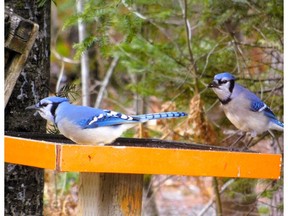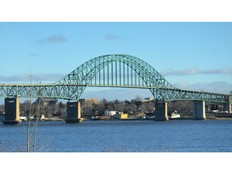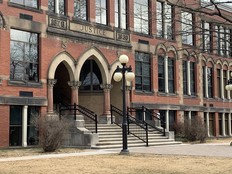This week's collection of Sightings

Article content
When a rare bird such as an indigo bunting or a blue grosbeak appears from farther south, we tend to notice their blue tones and perhaps get a bit excited because they’re unusual and beautiful. But to Darlene’s point, our common blue jay is just as striking and perhaps more so, as it has wonderful white trim and black edging in its plumage and it sports a crest which is unusual among our many bird species. So the next time you see a blue jay in good light, take a good look and appreciate just how beautiful they really are. Unfortunately for most of us, familiarity often diminishes our appreciation of things. Jim

When I was a boy there were no Canada geese known to nest here in New Brunswick, which is hard to believe today. We would see lots of them in spring and fall, but all would fly farther north to breed. That began to change in the mid-1990s when about 4,000 “problem” geese were captured in Ontario and released in various areas of N.B. by provincial biologists. From that nucleus has grown a nesting population that now spans the province and we have pairs of nesting geese in most wetland areas in spring and early summer and younger non-breeding individuals spending time in groups during the warmer months. Most of our geese are forced out of the province when freshwater freezes over, but the advance of climate change could result in numbers of Canada Geese becoming year-round residents sometime in the future. Jim

As I mentioned with Burt’s other Canada goose submission, geese are now a familiar sight in many places, including the St. John River where they historically stopped in numbers in the spring before flying farther north to nest. I understand that male Canada geese can breed at three years of age while females usually need to be age four. Nests are placed on the ground, often on small islands, abandoned beaver houses or in a location where four-footed predators are unlikely. Both parents guard the nest and goslings closely and as a result Canada geese are quite successful breeders. Jim

Burt got a nice shot of this handsome wild turkey. The sunlight brings out the iridescence in the bird’s feathers when seen at close range. Otherwise turkeys look black on an overcast day or at a distance. The wild turkey is thought to have moved into N.B. from populations established several decades ago in Maine by wildlife biologists there. Wild turkeys in southern Vermont were captured and introduced to southern Maine where a wild population once existed before they were extirpated in the early 1800s through over-hunting and other threats. Once the birds became established in southern Maine, some were captured and transplanted farther north in the state where they became established there. The process was repeated and now every county in Maine is populated with wild turkeys and they are believed to have gradually spread in our direction, on foot, beginning in the 1990s. Wild turkey populations near the border with Maine are most likely to be from Maine while populations found farther east in N.B. could be birds released by well-meaning local residents. Climate change could be helping these birds become established in the wild as there are no definite records of a historical wild turkey population in N.B. Jim

Debbie’s peanut dispenser is a neat feeder, capable of holding a lot of nuts in the shell and requiring birds like blue jays and chickadees to pick at the peanuts and gradually extract them one by one. But grey squirrels are both strong and smart and I’ll bet it’s not this fellow’s first visit. Looking at her photo I expect the squirrel was strong enough to simply pull the wires apart and help itself to however much it wanted. An adult grey squirrel is much larger than the familiar red squirrel and we can see that when we compare the length of this one to the diameter of the feeder and the size of the peanuts. Jim

Heather is right. The fox sparrow is one of the larger North American sparrows and is a generally uncommon spring and fall migrant through N.B. on its journey to and from its northern nesting areas. We can easily see why it got its name. The rusty plumage of our eastern sparrow can suggest the pelage of a red fox. The eastern subspecies gave rise to the species’ name although there are three other western subspecies, each with much less rufous than our birds. The breeding range of the fox sparrow actually begins as far south as northern New Brunswick’s Christmas Mountains and extends from Newfoundland to Alaska. Jim

The lovely bohemian waxwing usually does travel in flocks, but occasionally singles will appear. That was the case with the first one I ever saw many years ago. This is our waxwing of winter, migrating here in late fall from nesting areas in the boreal forest generally west of Hudson Bay and returning there by early May. The birds spend the winter searching for residual apples, crab apples and various berries on trees and shrubs and moving on once a food source becomes depleted. The bohemian is larger and more greyish than our summer cedar waxwing and has the rusty patch under its tail that you can see in Don’s photo. Cedar waxwings are white or have a pale yellow wash under the tail. Jim

Pam’s friend is certainly lucky to have eastern bluebirds return, as they aren’t found regularly on most properties around the province. However, bluebirds are gradually increasing in N.B. as people continue to put up nest boxes for them and our climate gradually warms. At one time N.B. was at the northern limit of their range, but times are changing. For many years I wondered why a pair of bluebirds would find a property with what seemed to be a perfect birdhouse to suit their needs in an open area, but they would move on. And then it finally struck me – I’ve never seen bluebirds set up housekeeping anywhere there wasn’t plenty of insect life on the ground and in the grass to feed on. It appears that what’s most important to them is a dependable food supply for both the adults and potential youngsters and if it isn’t there in sufficient quantities, they won’t stay. It’s another reason to avoid the use of pesticides. Jim
JIM WILSON is the chair of the New Brunswick Bird Records Committee. Send your Sightings of live animals and birds by email to tjsightings@postmedia.com. Please indicate your full name and the community where you live. Due to space constraints, we are not able to publish all the submissions we receive.












Postmedia is committed to maintaining a lively but civil forum for discussion. Please keep comments relevant and respectful. Comments may take up to an hour to appear on the site. You will receive an email if there is a reply to your comment, an update to a thread you follow or if a user you follow comments. Visit our Community Guidelines for more information.